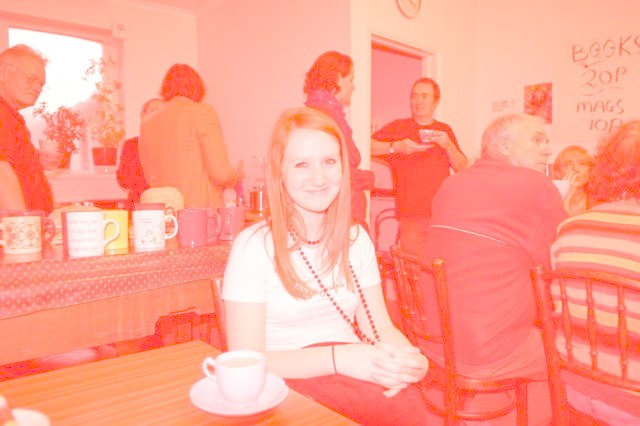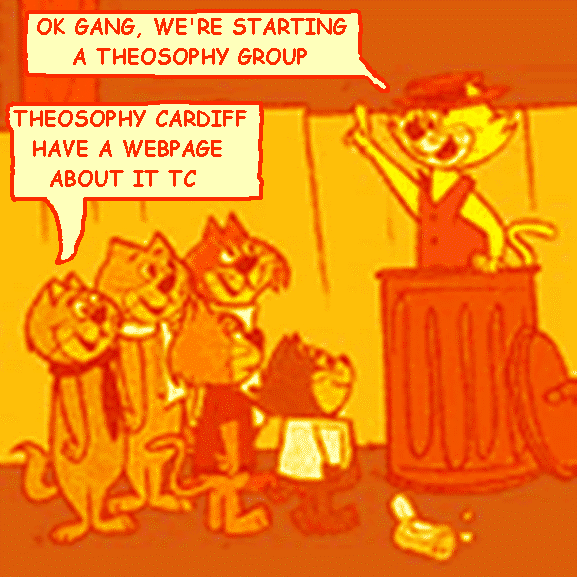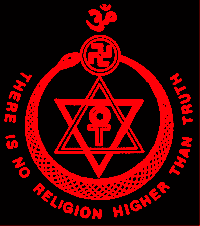
Theosophical Society,
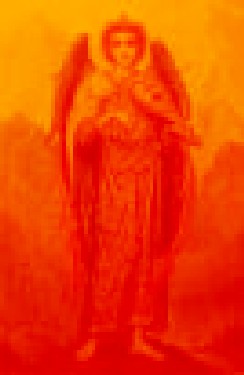
Death
&
How to Get Through It
Lentil burgers, a thousand
press ups before breakfast and
the daily 25 mile run may put
it off for a while but death
seems to get most of us in the
end. We are pleased to
present for your
consideration, a definitive work on the
subject by a Student of
Katherine Tingley entitled
“Man After Death”
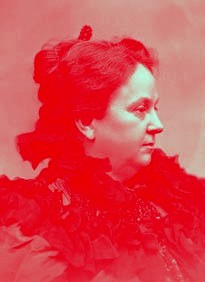
Katherine
Tingley
1847
– 1929
Founder
& President of the
Point
Loma Theosophical Society 1896 -1929
She
and her students produced a series of informative
Theosophical
works in the early years of the 20th century
Man After Death
By
A Student of
Katherine Tingley
Chapter 2
The Place of Death
in Evolution
While, as we must
all agree, the purpose of man's evolution is to lead him to the complete
knowledge of the universe in its height and depth, and to the enjoyment of its
glory, this cannot be done until he becomes one with the higher self, the
divine soul behind our separated human personalities, that divine soul which is
the Christos, the true Vine of which we are the branches. To attain this
godlike state we have to break down the wall of selfishness dividing one from
the other; we have to identify our personal interests with those of the whole,
and consciously to feel the unity of the human race -- that brotherhood which
is a fact in nature, and which is not a sentiment or a fanciful conceit of idle
dreamers.
The
theosophical teachings about man after death are the simplest and most rational
intimations that could be looked for on a subject of such profound obscurity to
the ordinary human mind. Above all, they are not speculations as to what may
be, like the poems of Dante or Milton.
They are the
results of the observations of millenniums by those advanced helpers of the
race who have pierced the veil and who have been able to enter consciously into
many states of which we can hardly imagine the existence. Though these teachers
have not given out nearly all the knowledge in their possession, many teachings
belonging to the regions of the higher Mysteries being reserved as they cannot
be revealed yet in our present state of evolution, enough is plainly set forth
to satisfy reasonable inquirers who have got away from the misleading
prejudices and limitations of orthodox bigotry or materialistic science.
For
convenience, because the English language has not developed the suitable terms,
we shall use the few Eastern words which H. P. Blavatsky adopted to save time
in endlessly long explanatory sentences. The words may be found in Sanskrit or
other Oriental languages, but the meanings attached to them by H. P. Blavatsky
are not always precisely the same nowadays in the original languages from which
they were taken. The special uses of the few terms used will become quite clear
as we proceed. Every science requires a certain number of words of technical
meaning and it would be curious if theosophy, the science of life, were an
exception.
As a necessary
introduction to the teaching of what takes place after the last breath is drawn
we must have a fair idea of what man really is. In another Manual the complex
nature of the human principles has been described at length.
For our
present purpose the following convenient arrangement of the principles or
subdivisions of our nature as published by H. P. Blavatsky is sufficient, but
we may notice
in passing that several other slightly modified classifications were used by
her as well.
The various
Eastern schools of psychology differ as to the best arrangement, for the
principles can be grouped in different divisions.
What we call
the physical body -- i.e., the illusory appearance produced by the passing of
material molecules through the ideal astral matrix -- being so mutable can be
safely ignored. Strictly speaking, it is not a principle at all. The Egyptian
and ancient Greek classifications are still other modifications, but H. P.
Blavatsky decided that the following order was the most suitable for her
pupils.
THE HIGHER SELF
is atma, the inseparable ray of the universal and One Self. It is the god
above, more than within, us. Happy the man who succeeds in saturating his inner
ego with it!
THE SPIRITUAL
divine "ego" is the spiritual soul or buddhi, in close union with manas,
the mind principle, without which the former is no ego at all but only the
atmic vehicle.
THE INNER or
HIGHER "ego" is manas, the "fifth" principle, so called,
independently of buddhi. The mind principle is only the spiritual ego when
merged into one with buddhi; no materialist being supposed to have in him such
an ego, however great his intellectual capacities. It is the permanent
individuality or the "reincarnating ego."
THE LOWER or
PERSONAL "ego" is the physical man in conjunction with his lower self
-- i.e., animal instincts, passions, desires, etc. It is called the "false
personality," and consists of the lower manas combined with kama-rupa
and operating
through the physical body and its phantom or "double."
The remaining principle,
PRANA or life, is strictly speaking, the radiating force or energy of atma --
as the universal life and the one self its lower, or rather (in its effects)
more physical, because manifesting, aspect. Prana, or life, permeates the whole
being of the objective universe, and is called a principle only because it is
an indispensable factor and the deus ex machina of the living man. -- adapted
from The Key to Theosophy, pp. 172-3
We must never
fall into the vulgar error of thinking of these principles as entirely separate
things, like the coats of an onion; during waking life our consciousness is
playing through the whole set of principles, atma excepted, as it really stands
above everything else. The human consciousness cannot be defined intelligibly;
at best we can say it is the feeling of 'I-am-I' and no other. The seven
principles somewhat resemble the seven prismatic colors which appear to be one,
white, when united, but when separated are found to have individual
characteristics.
Force and matter
are admittedly indestructible, and conscious intelligence makes them coherent
and orderly in their manifestation; otherwise chaos would ensue. The power of
feeling inherent in us penetrates the different principles; but in our present
state the mental self-consciousness is what makes us human, though
unfortunately with the rarest exceptions this is merely the lower intellection
and not the higher mind or the complete manas.
When humanity
is fully self-conscious on every plane of existence it will stand forth as the
divine man it is destined to become.
After death
the higher manas withdraws into itself its 'shadow,' the higher aroma of the
lower manas, which has been prominent during life, and which we erroneously
think is our real self; it is this dual manasic principle, therefore, that we
have to watch, chiefly, in its postmortem experiences.
To get an
adequate idea of the conditions after death we must realize that the center of
feeling giving us the sense of I-am-I, our individual consciousness, is able to
identify itself with each of the different aspects or planes of nature.
These
identifications are usually, though inexactly, called changes of consciousness.
It is a matter of common recognition that a person is in an entirely different
state when concentrated upon the solution of some difficult mathematical
problem from the one he is in while enjoying a Christmas dinner or listening to
worthy music; the intuitive consciousness which directs right action as in a
flash, heedless of the slow process of reasoning, is different again; and then
there are the little-understood states of dreaming and dreamless sleep.
Theosophy being essentially based upon the study of consciousness, follows the
individual perception through these states of consciousness and many others not
yet recognized by science, until the personal limitations melt away into the
whole, and "the dewdrop slips into the shining sea." Throughout all
the ramifications of this marvelous journey let us never forget that it is the
conditions that change, not the perceiving, conscious center.
There are many
planes or conditions in nature's marvelous storehouse, and the vehicles or
sheaths that the soul has created in order that it may understand these planes
by plunging into them, are limitations.
As we get away
from the physical world and the brain-cells of physiology, the vehicles of
consciousness are found to be of more subtle matter than the terrestrial, more
ethereal, in harmony with the new conditions. A helpful method is to consider them
as possessing higher speed and different qualities of vibration, and
consequently, unfamiliar properties and energies.
The list of
principles previously given leads to an important point in connection with
consciousness after death. To understand this we must dwell upon the strange
fact that a center of self-consciousness can apparently emanate or put out an
automatic consciousness resembling the light thrown by a lamp on a wall. It
lights up a dimmer sensibility latent in the atoms of the associated substance.
So, after death, the astral man or ethereal double of the body, though
intrinsically mindless, has an automatic memory, an induced or reflected
intelligence from its association with the lower manas, which persists for a
while, but must not be mistaken for that of the real ego.
There are
other separate persistences of consciousness after death which will be referred
to later on, but the principle is the same.
The full
consciousness neither disappears into annihilation at death, nor does it exist
in the same conditions as during life but passes on to higher and inner states
of being, leaving behind it sundry vehicles or emanations which have a
reflected life and sensibility of their own, lasting for various periods
according to the energy put into that part of the nature during life, and
derived from their contact with the real ego.
To get even a
dim appreciation of the release of the higher manas by death, the student is
urged to dwell on this possibly novel conception to him of the temporary
persistences of partial reflections and survivals of the lower passions of the
human being now undergoing the process of purification.
Perhaps this
important point can be grasped more clearly if we watch the automatic
department of our minds which intelligently, even if vaguely, answers
questions, counts figures, and does other simple mental acts while 'we' are
profoundly absorbed in reverie. It is quite common to read a page without
having the slightest recollection of a word, because the connection between the
real center of perception and the automatic consciousness has been temporarily
separated. Some businessmen, again, devise their most important enterprises
while the lower mentality is automatically occupied with a game of cards.
The same part of
our nature has the power to shut the doors of memory against the higher man,
and prevent their being opened for a while. Many instances of dual
consciousness in daily life will occur to the reader, without referring to the
merely physical consciousness of the body, which we all know can be absolutely
disregarded for a while, as in the case of soldiers not feeling their wounds in
the excitement of battle.
From the
knowledge that consciousness can be in more than one state at the same time,
paradoxical though it seems, it is but a short step to see that a continuation
of a lower order of intelligence in a subtle body, after the breaking down of
the bond uniting the whole, is not by any means an extraordinary idea.
The
instinctive intelligence, reflex action, or what you will, in a decapitated
turtle or conger-eel, which will bite, if irritated, for hours after being cut
up; or the automatic memory in a heart which keeps it beating for a long time
after removal from the body, are illustrations of similar persistence; and the
semi-animal sensibility of the venus' fly-trap or the sensitive-plant is
closely allied. The appreciation of the complex groups of semi-conscious
subordinate 'men' combining with the real man to form a human being, is of
similar nature to the comprehension of a solid geometrical figure from the
study of its component faces laid out on a flat plane. Like the geometrical
figure which at last combines in the mind, as a solid, the unity of the
principles has to be felt by the inner perception.
Observe
carefully that these semi-intelligent emanations -- passions and desires --
have bodily form to manifest in, however tenuous and ethereal it may be and
however temporary. This point will be further dealt with later, but it is
necessary to refer to it now for fear of misunderstanding.
The normal
consciousness, composed of all the aspects of mental and emotional
consciousness, added to the lower sensations of the physical cells and the
organs of the body, we call our personal self, and it is this that is greatly
modified by death, which weeds out the impermanent and intensifies the
self-consciousness of the inner or higher ego.
Change is
necessary for progress in the present condition of things. The feeling of
selfhood is partially induced from the element of change in the surroundings.
Though we have
obviously to advance beyond this attitude of mind, which exists because of our
incomplete development, yet at this moment each perceives his own existence by
the relationship of himself to what is not himself; and that relationship, to
be felt, requires friction or change. Although, philosophically speaking,
behind all stands the Spectator, the Watcher, the atma-buddhi, yet from the
standpoint of the lower mind, absolute changelessness of conditions would be
equivalent to nonexistence. We only feel the presence of still water by a
difference of temperature; when the temperature becomes the same as that of the
finger the water is not felt. We should lose all knowledge of our existence if
there were no changes of consciousness. Absolute consciousness would be the
same as non-existence to us as individual human beings, for the same reason
that absolute light without the slightest shade or variety of color would be
the same in effect as pure darkness, from want of contrast -- or otherwise,
from lack of change. 'Death,' therefore, is a necessary part of life for us at
present, for it gives the greatest possible change of conditions, and ushers in
a new order of existence for a while.
Carrying
further the idea of change, the alternation of life and death -- cyclic
manifestation and repose -- is a fundamental law of the universe; but what is
withdrawal and dissolution from one aspect is the opening into keener life when
regarded from the other pole of being. So the death of the body allows the soul
to be born into a larger life, to seek spiritual refreshment until the
inevitable periodic law draws it back into reincarnation again on earth -- to
be, like Adam, "clothed in skin," in order to gain a further share of
experience in the material world.
Earthly
existence is, from the higher aspect, death, not only allegorically or
mystically, but actually; for the higher ego, when entangled with the
brain-mind, temporarily loses its celestial knowledge, and is only able to
re-enter the higher spiritual states, in the case of the normal man, during
dreamless sleep. Sleep is indeed the twin brother of death, and in greater
measure than modern thinkers suppose.
It must not be
thought that man has to undergo rebirths on earth forever, although a large
number of such experiences are necessary under cyclic law.
After material
conditions and temptations have been mastered, other regions open out and
physical incarnation, being unnecessary, is left behind.
For more info on Theosophy
Try these
Cardiff Theosophical Society meetings
are informal
and there’s always a cup of tea afterwards
The Cardiff Theosophical Society Website
The
National Wales Theosophy Website
This
is for everybody not just people in Wales
Dave’s
Streetwise Theosophy Boards
If you
run a Theosophy Study Group,
please
feel free to use any material
Theosophy Cardiff’s Instant Guide to Theosophy
General pages
about Wales, Welsh History
and The History
of Theosophy in Wales
One Liners & Quick Explanations
The Most Basic Theosophy Website in the Universe
If you run a
Theosophy Group you can use
this as an
introductory handout
The
South of Heaven Guide to
Theosophy and Devachan
The main criteria
for the inclusion of
links on this
site is that they are have some
relationship
(however tenuous) to Theosophy
and are
lightweight, amusing or entertaining.
Topics include
Quantum Theory and Socks,
Dick Dastardly and Legendary Blues Singers.
No
Aardvarks were harmed in the
The Spiritual Home of Urban Theosophy
The Earth Base for Evolutionary Theosophy
A
B
C
D
EFG
H
IJ
KL
M
N
OP
QR
S
T
UV
WXYZ
Complete Theosophical Glossary in Plain Text Format
1.22MB
Preface to the American Edition Introduction
Occultism and its Adepts The Theosophical Society
First Occult Experiences Teachings of Occult Philosophy
Later Occult Phenomena Appendix
Preface
Theosophy and the Masters General Principles
The Earth Chain Body and Astral Body Kama – Desire
Manas Of Reincarnation Reincarnation Continued
Karma Kama Loka
Devachan
Cycles
Arguments Supporting Reincarnation
Differentiation Of Species Missing Links
Psychic Laws, Forces, and Phenomena
Psychic Phenomena and Spiritualism
Try these if you are looking
for a
local Theosophy Group or Centre
UK Listing of Theosophical Groups
Worldwide Directory of Theosophical Links
____________________
Your Own
Theosophy Group Starts Here
A Guide to starting your own Theosophy Group
These are
suggestions and pointers for forming
your own
independent Theosophy Group and
not instructions
on how to form a branch of a
larger Theosophical Organisation.
The subject of
affiliation to a larger body is
covered but as
affiliation may mean compromise
and nobody owns
Theosophy anyway, we leave
that decision entirely up to you
________________________
General pages
about Wales, Welsh History
and The History
of Theosophy in Wales
Wales is a
Principality within the United Kingdom
and has an eastern
border with England.
The land area is
just over 8,000 square miles.
Snowdon in North
Wales is the highest mountain at 3,650 feet.
The coastline is
almost 750 miles long.
The population of Wales as at the 2001 census is 2,946,200.
Hey Look! Theosophy in Cardiff
